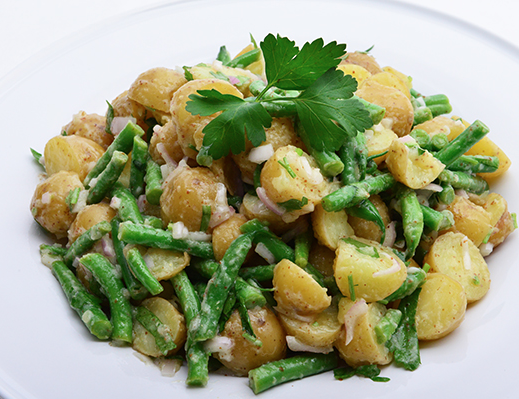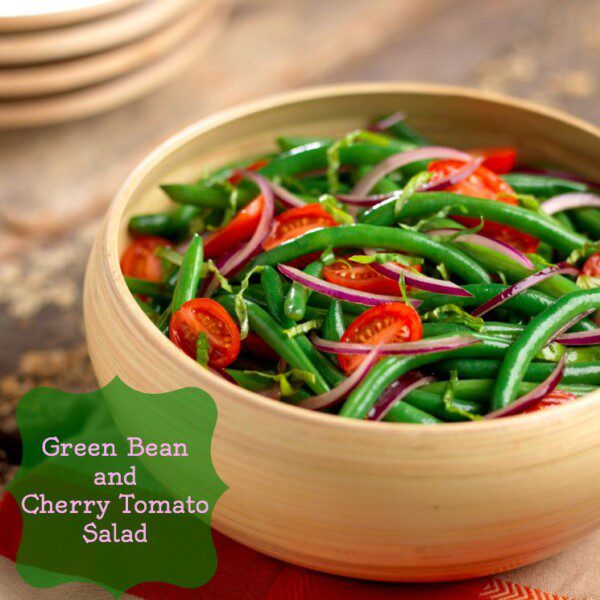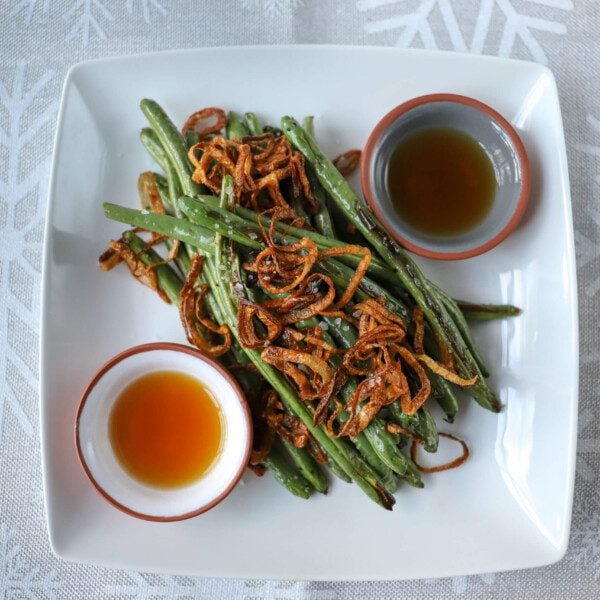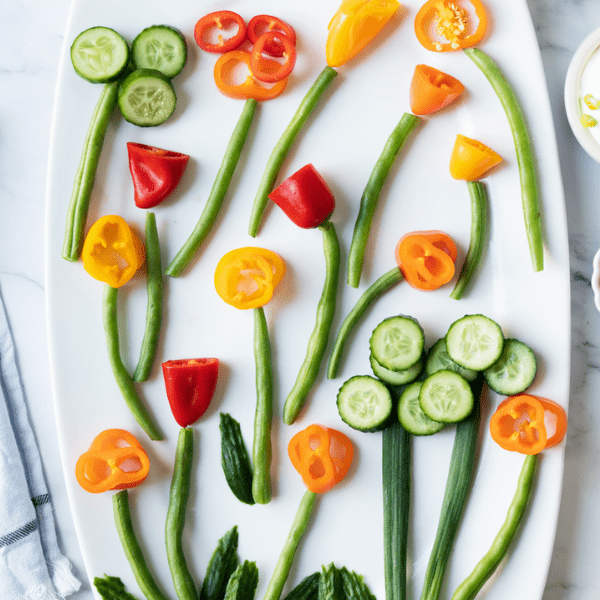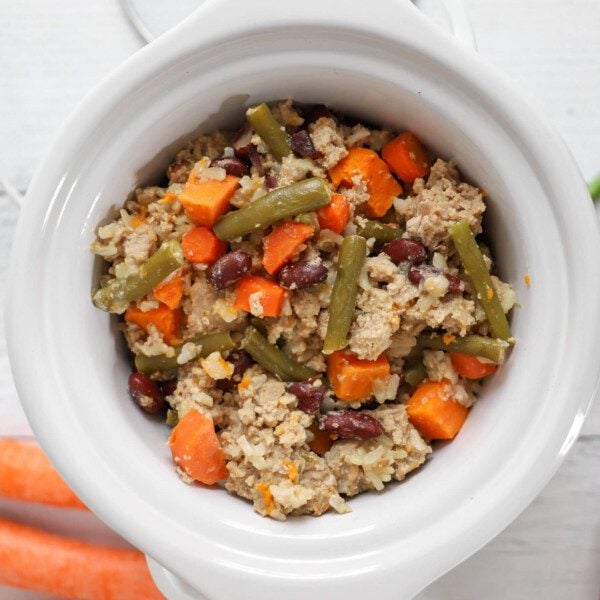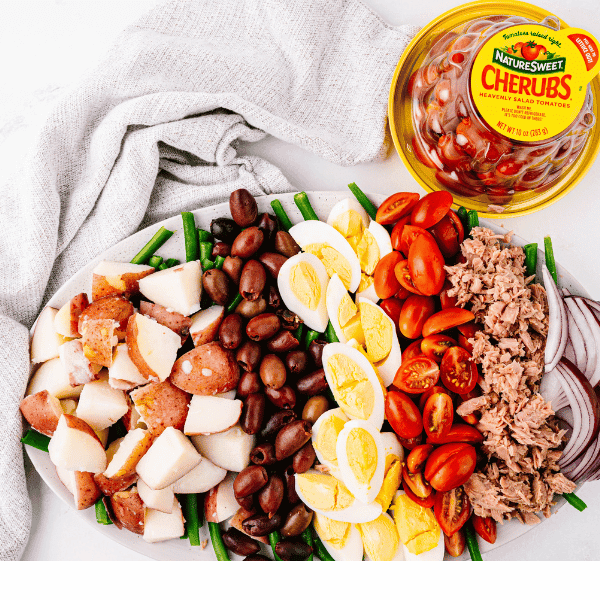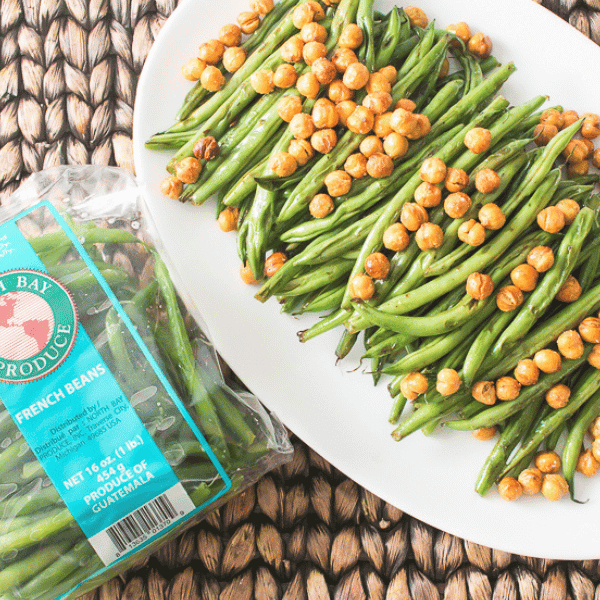How to Select Green Beans
- Choose green beans that are just that: green. Yellow or brown hues indicate that the beans are old or spoiled.
- A green bean’s skin should be smooth and tight. Avoid any with wrinkles, lumps, or creases. This can indicate spoilage or dryness.
- Try to avoid larger beans. These tend to get stringy and tough. Small and medium green beans have the best flavor and texture.
- Green beans should snap when you bend them. Don’t snap every single green bean, of course, but take one in the bunch you intend to purchase and bend the pod. It should snap easily, and likely indicates that the rest in that batch would do so as well.
When are Green Beans in Season?
In most regions, green beans are typically in season during the summer, from late May to September. However, the exact timing can vary depending on the climate and geography of the growing region, as well as the specific variety of green beans being grown. You can find green beans year-round, but the summer and early fall will be the best time to eat them.
Varieties of Green Beans
Green beans come in a wide variety, depending on where you live. But no matter which variety you choose, green beans are a delicious and nutritious addition to any meal. Here are some popular types of green beans you’ll find at the store:
- Blue Lake: These are long, slender green beans that are bright green. They have a mild, crisp texture and a slightly sweet flavor.
- French Beans (Haricots Verts): French beans are thin and delicate with a slightly sweeter and more tender texture than regular green beans. French beans are typically smaller and more slender than other varieties and are a darker shade of green.
- Romano: Also known as Italian flat beans, Romano beans are wide and flat with a slightly thicker texture than other varieties. They have a robust, earthy flavor that is slightly nutty.
- Wax: Wax beans are similar in shape and size to Blue Lake beans but have a yellow or pale green color. They have a milder flavor than green beans, with a slightly buttery and sweet taste.
- Kentucky Wonder: These are long, thin green beans with a slightly curved shape. They have a thick texture and a rich, earthy flavor that is slightly more intense than other varieties.
Green Beans Nutrition Facts & Benefits
Here are the nutritional facts for a one-cup serving of green beans:
- Approx 44 calories
- 0 grams of fat
- 2 grams of protein
- 10 grams of carbohydrates
- 4 grams of natural sugar
- 4 grams of fiber
Green beans are healthy vegetables that are high in fiber and protein. Here are proven ways that green beans can benefit your health:
- Green beans have many vitamins and nutrients that lower your risk of diabetes, obesity, and heart disease, allowing you to live longer.
- Green beans are a reliable source of folate that helps decrease depression.
- Green beans also contain vitamin K, which improves calcium absorption that helps improve bone health.
How to Store Green Beans
- Green beans will keep for about a week in the crisper drawer of your refrigerator.
- Don’t wash the beans before you store them. Cover them in a dry paper tower and place them in a resealable plastic bag before refrigerating them. This helps keep excess moisture away from the beans so they last longer.
- Beans can be easily frozen for up to about a year. Simply blanch the beans before freezing them.
How to Prepare Green Beans
Here are our favorite ways to prepare green beans:
- Steamed: This is a simple and healthy way to cook green beans, preserving their nutrients and flavor. To steam green beans, place them in a steamer over a pot of boiling water and cook for 5-7 minutes.
- Roasted: Roasting green beans brings out their natural sweetness and adds a crispy texture. Toss them with olive oil and seasonings, then roast them in the oven at 425°F for 15-20 minutes.
- Sautéd: Sautéed green beans are quick and easy to prepare and mix with other flavors and seasonings. Heat some olive oil in a pan, add the green beans and garlic or shallots, and sauté for 5-7 minutes.
- Stir-fried: Stir-fried green beans are a tasty and nutritious addition to Asian-inspired dishes. Cut the green beans into bite-sized pieces and stir-fry in a wok or pan with oil, soy sauce, and other desired seasonings.
